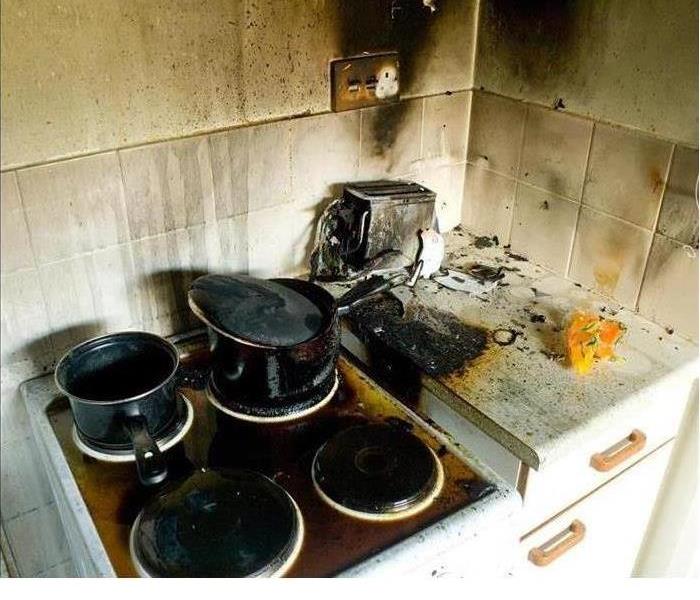Fires cause different types of smoke damage.
12/7/2022 (Permalink)
THERE ARE FOUR TYPES OF SMOKE.
Beyond just the fire damage, residual smoke and soot can cause a great deal of damage. Soot often contains impure carbon-based residues, creating a hazardous situation. Soot is basically un-burnt hydrocarbons. It’s the residue of the materials that were on fire. Many structural building materials, such as plastics, contain adhesives and petroleum-based (carbon-based) components. Carpeting and laminate flooring are an example of this. When these materials are not fully combusted, particulate carbon and gases are released into the air and become residues that eventually cling to or settle on interior surfaces as soot.
Four common types of smoke damage (dry smoke, protein residue, fuel/oil residue, and wet smoke) are caused by different circumstances like the fire’s temperature and fueling materials. The cleanup and restoration process varies slightly for each kind of smoke/soot contamination.
- Dry Smoke
Dry smoke is created by fast-burning, high-temperature fires that are typically fueled by paper or wood. Its powdery texture means it doesn’t smear when being wiped up. It’s relatively easy to clean compared to more dense smoke and soot residue. However, dry smoke usually produces very small particles of soot that can work their way into cracks or porous materials which can make it difficult to remove the smoke odor.
- Protein Residue
A cooking mishap can cause protein residue particles to be carried into the smoke. This type of smoke can be essentially invisible with no noticeable soot or streaking, but it can permanently discolor paint and other finished surfaces. While it may be challenging to see protein residue, it’s not hard to smell it. I left untreated, the unpleasant odor will intensify over time and can permeate your entire home or business and the contents within.
- Fuel/Oil Residue
Fuel/oil residue, also called petroleum residue, thankfully isn’t seen too often in home or business fires unless petroleum products were being stored in the space. However, it’s not uncommon for a building with an oil-burning furnace to have a “puff back” where it doesn’t ignite properly and ultimately releases smoke and soot into the surrounding space. This means you can deal with fuel residue smoke damage even when there hasn’t been a fire. Petroleum residue is sticky, dense, and especially difficult to clean. Its odor is strong and offensive, efficiently ruining upholstery and carpets when not cleaned promptly.
- Wet Smoke
Wet smoke damage comes from low-heat, smoldering fires. Both plastic and rubber produce this contamination when they are burned. These incredibly smelly fires usually have fewer flames but produce thick, black smoke. Because wet smoke residue is sticky and dense can completely cover your home or business’s surfaces. This soot residue is challenging to remove without special equipment and cleaning agents because it tends to smear during the cleaning process.
How does SERVPRO of Yuma restore smoke damage to your home or business?
There are three main ways to deal with smoke damage after a fire:
- cleaning, resurfacing and replacing. When possible, we clean your space by removing the smoke residue from all existing items, avoiding the high costs of replacing them. This is often the case with smaller blazes that leave behind minimal damage.
- When the smoke residue is worse or has been given time to permeate your space, we will attempt to salvage or repair existing items to return them to their pre-fire state. This involves advanced cleaning or re-painting, re-carpeting, re-upholstering, and so on.
- In extreme cases, we will replace all non-salvageable items and provide reconstruction services. This is the last choice solution because of its high cost, but it’s necessary when the damage is severe. Please understand: If an insurance company is involved, then an insurance adjuster will have the final say on what is to be salvaged or replaced.
Please get in touch with our office if you ever experience a fire and smoke damage emergency. The sooner we are invited to help, the faster you can return your structure to its preloss condition. Please understand during a disaster, first and foremost, we work for you, and we’re also experienced in successfully interacting with insurance companies. We’re SERVPRO of Yuma East Foothills. 928-247-9811

 24/7 Emergency Service
24/7 Emergency Service
